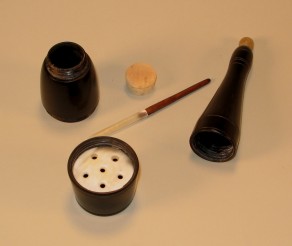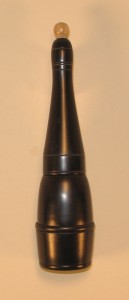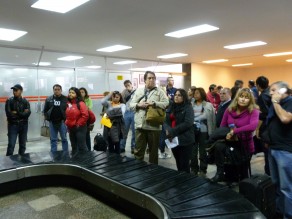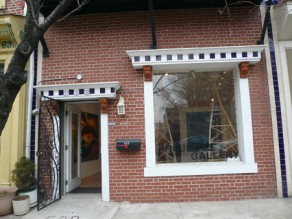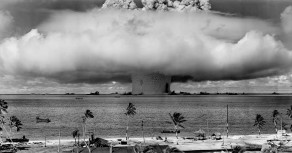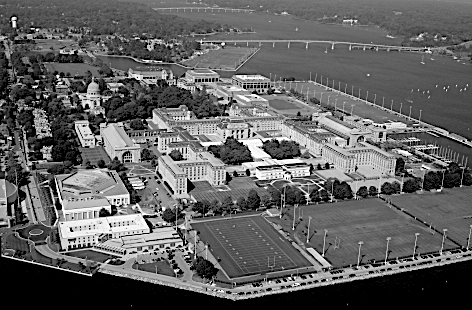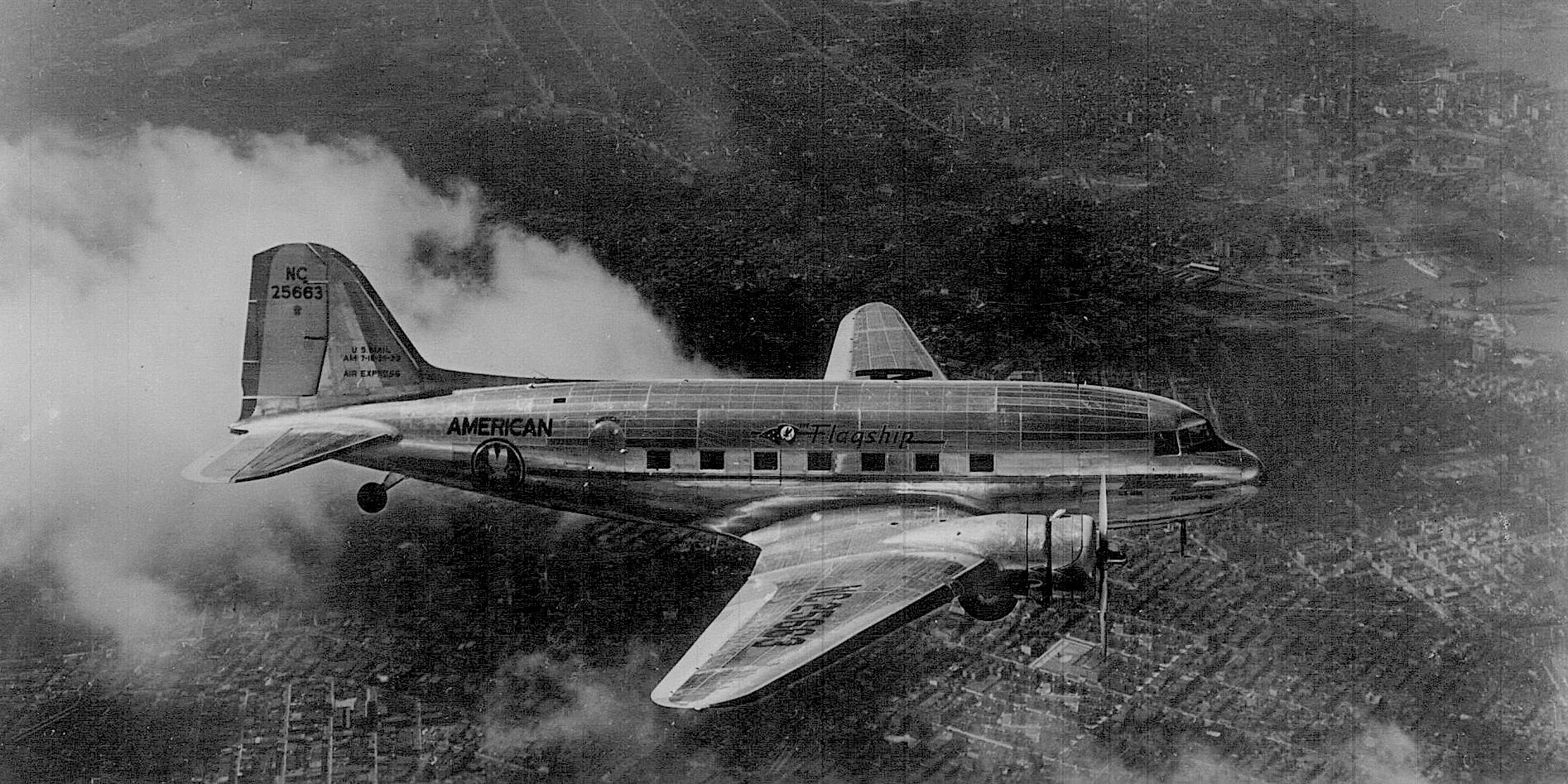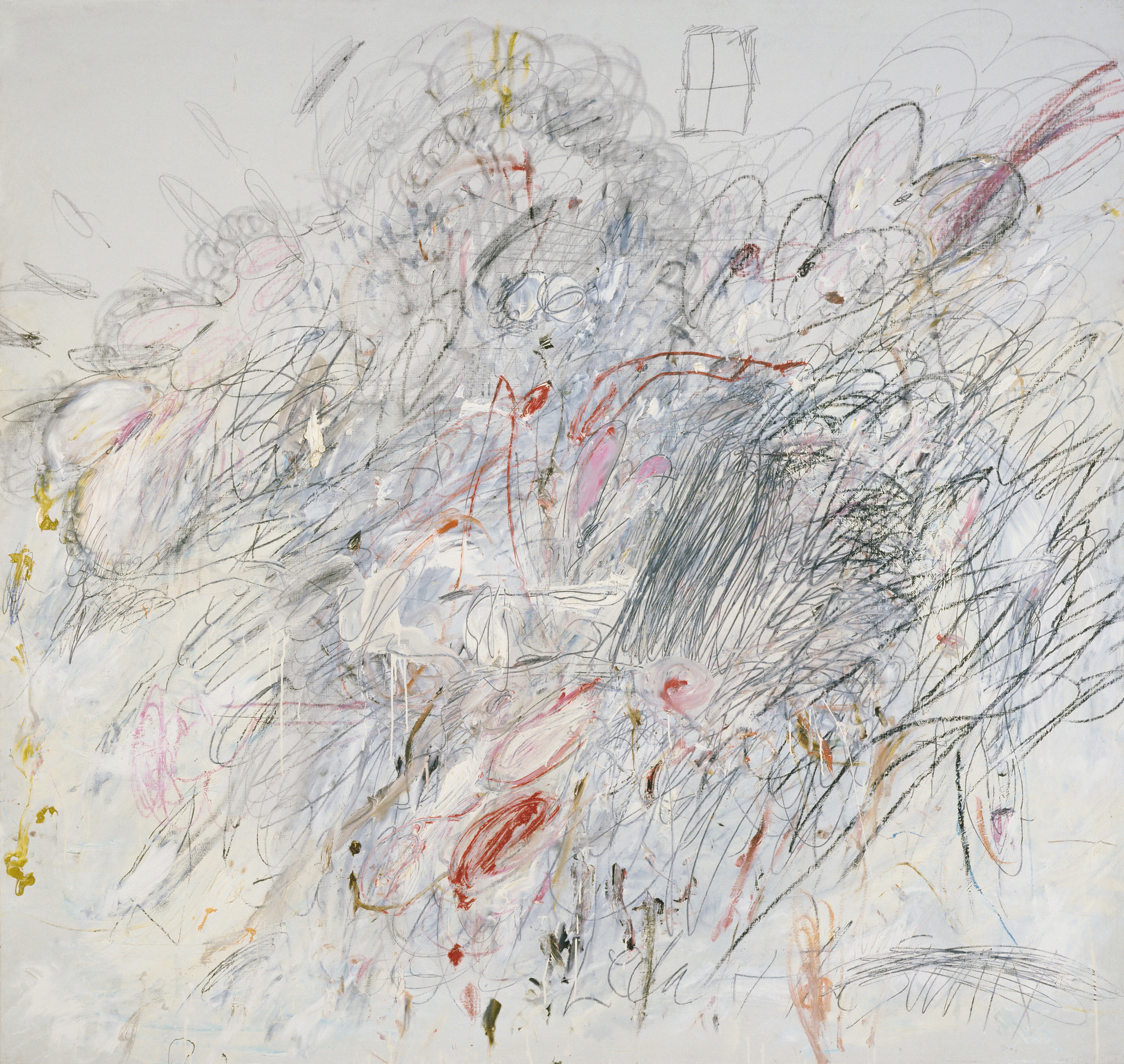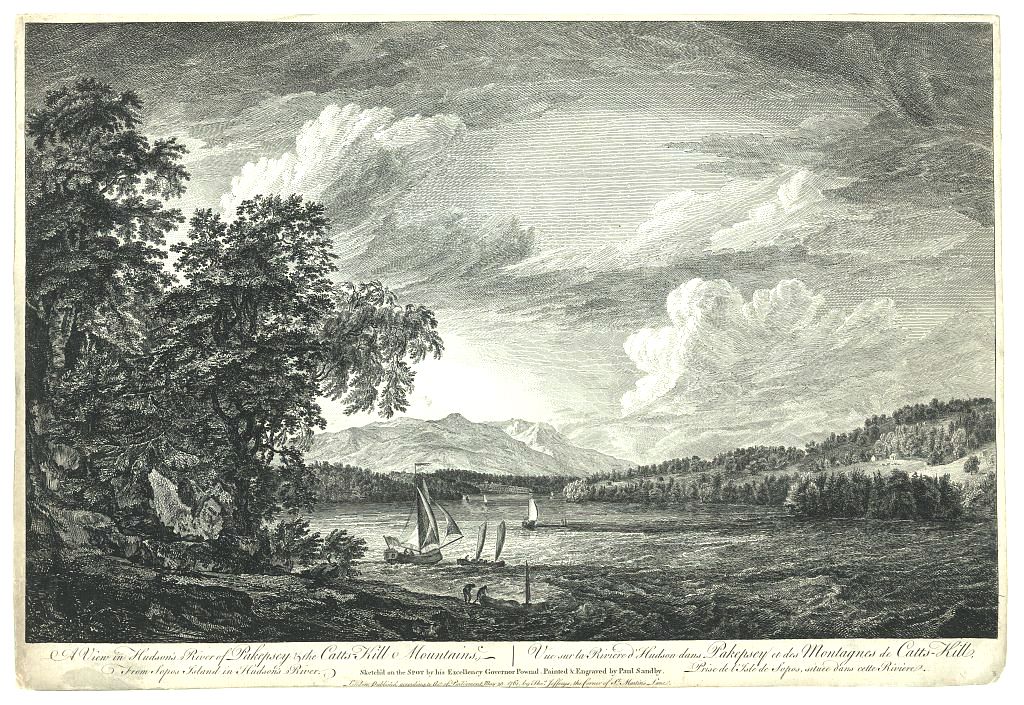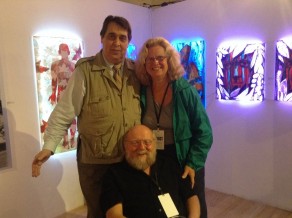
I first met Frank and Helen Hyder in 1973 when Frank and I shared a road trip from the Philadelphia suburbs to Skowhegan School of Painting and Sculpture. Over the years we maintained a close and collegial friendship. The following conversation is one of the few oral history ventures I have undertaken pro-se, and it should be illuminating to artists and others who find themselves dazed and confused by the growing complexity of today’s rapidly evolving art scene.
FRANK AND HELEN HYDER: PART ONE
James Lancel McElhinney © 2014*
On March 19, 2014 I sat down with Frank and Helen Hyder to talk about the origins of Projects Gallery, moving from Philadelphia to Miami and the challenges of balancing a serious studio practice with the delivery end of the art business. We met in the library of the Art Students League of New York
James McElhinney: I am speaking with Frank and Helen Hyder on Wednesday the 19th of March 2014 in the library of the Art Students League of New York 215 West 57th Street. So, welcome. We’ve been talking a lot already. I’m curious. I’m assembling information for maybe a book, maybe some articles, maybe some other things; and you are two people whom I have know longer than almost anyone else in the world. And, also you are two people who have sort of taken an unusual path which is Frank as an artist, who toiled for years in higher Ed and tried to balance a career as a painter against the demands of teaching in a small, gender-specific art school, and Helen, you were the personal secretary assistant to the present of Hunt Manufacturing. Is that correct?
Helen Hyder: Well, not to the president. I had other administrative duties but not to the president. But you got it close.
JM: You were in the executive suite of the administrative doers.
HH: Yes.
JM: And so the upshot is that you are working together. Frank as an artist, you’re in the studio every day. But you took a kind of a prescient move, which is that you opened a gallery. What inspired you to open a gallery?
HH: A couple things. My company was bought and I was invited to follow them to Ohio and I declined. And we had just renovated our building and were going to rent it out and we had talked about something retail; but in the backs of our minds was the idea that for years I had watched him get screwed over, for better use of the word, by dealers in terms of not being honest with artists. As we’d been talking about, taking in inventory selling it and not paying and then suddenly we don’t know where it is, and artists aren’t good at record keeping, so one doesn’t know who has what. So there was that sense of doing something that wasn’t so much based on greed and retail but more so presenting work honestly and ethically and paying the artists first before anything else. And that’s really what the premise was and I started it in August of 2004, put on a show of our friends and had no idea what the heck I was doing. And he said to me, “Where’s your press release?”, and I said “What the heck is a press release?” We put on our first show and sold some work and that’s how we got started. And I can say in the ten years we’ve been doing this that I have been able to follow that initial creed of paying the artist first before anything else.
JM: What year did you actually hang out your shingle?
HH: 2004
JM: And what month? Do you remember?
Frank Hyder and HH: August
FH: And so I knew something about how a commercial gallery worked and, having been affiliated with an education institution for a number of years, I knew something about how university galleries worked. And I knew something about how museums worked and then I had just come back from doing a senior Fulbright research, a year in South America, where I’d done a lot of interacting with museums that were working in community-based operations and things like that. So, we created a kind of a hybrid gallery that was not purely a commercial gallery. We reached out and established liaisons with arts-based institutions, the first one being Mural Arts of Philadelphia. We then reached out to Taller Puertorriqueno; we reached out to the Brandywine Press, which is the oldest black printing press in the United States. So by reaching out and creating a network and bringing them in and then discussing a kind of a show that we could put together and put on in our space, it created a dynamic. We existed in our space sometimes commercial, sometimes public; but it enabled us to really form-shift frequently and create venues and opportunities that brought an immense cross-section of groups through our door. We would also allow our space to be rented by corporations and businesses for special receptions that would bring new people in just to see what we had on the walls. And we even became the host for two years for a minority business entrepreneur that would come and set up little mini business fairs one night a month in the gallery to kind of create a dynamic and introduce the business model to people who pretty much had never had any exposure to it. So what we were trying to do was build a number of–if you imagine an aerial view of a lake you can see where a deer comes to the lake and other animals leave paths in the grass. Our idea what to see that as many different paths as possible would lead to that lake. Not with the goal of making a lot of money but basically creating a site where work that was not in the public domain, was not being seen as frequently, got the same level of respect. So, there were times when we put on mini seminars, and we had writers from the Philadelphia Inquirer, the architecture critic; we had a sociologist that wrote books; and we did a show that was based on the dynamics of urban renovation in concert with how artists change neighborhoods and then developers drive artists out of the neighborhood. So, anyway, over the ten years we built a press book of an immense amount of reactions to what we were doing and got a pretty good rep for doing it. We would let artists come in. We had a space we built in the basement. We would let artists come in and build an installation that could be up for months, and it would take weeks to put it together and we would let it stay. These were all models that exist, but they didn’t really exist on a commercial network. At the same time, we found the only way we could really fundamentally create enough money to survive was by going and doing art fairs. So within six months of our first business operation—
JM: How did you discover that?
FH: Well, somebody suggested that since we had a real gallery, we could actually maybe go to an art fair. So we took a loss lead and we tried it. What I did was I went around and I got a number of artists and I invited them to be part of what we were doing; and they would all pay a small amount toward the collective whole cost, with a guarantee that they’d have an equal amount of space and equal promotion, and they’d get their money back as soon as we sold anything. So it was again a novel concept because it was very cooperative. We put together our first show, which was Art Miami, in 2004.
HH: 2005
FH: Yeah, 2005, January; and we realized instantly that we could generate enough money in these types of events to keep the gallery running for months at a time. So we followed up with others; and now at this point, we’ve done more than 60 different art fairs over the ten years of business. In as diverse places as London; Toronto; Caracas, Venezuela; Santa Fe, New Mexico; Miami; New York, etc. And, that has given us other things, which is exposure to a pretty good level of galleries. We’re not a top-tier gallery. We’re interacting with all of the upper level, second-tier galleries, good quality; we have many friends here in New York. And for me as an artist, the dynamic suddenly changed. I walk into a gallery and the dealer is happy to see me. And we earned our stripes or our respect on the field of that arena. And we learned—it was also like a mini seminar every time we would do an art fair. We’d have down time where we could learn from other dealers, how you deal with this situation.
JM: I can imagine everybody’s learning from each other because the scene is evolving all the time and changing so rapidly, and so you can’t just come up with your branded paradigm and it may not work. It may work one year but not the next
FH: And it’s in the tradition of the great bazaars, as opposed to a great market, because the openness of the art fairs, the clustering of space, and the cross-semination of ideas. Where you’d see something out of the corner of your eye and you’d say, “I you think I know how to do that”, and you try to incorporate it into your next fair. And so it led to a kind of building of a stable of artists that we’d picked up so we had artists from Cuba, artists from Canada, artists from Venezuela, all under one umbrella.
JM: How did they come to you? Did they find you or did you find them?
FH: Generally we would see them at an art fair or she would get a response from them. For example, we did the a fair in Chicago one year. After we had set up, I went on a vision quest of sorts, a sort of dream search; and I went to a couple of the fairs. And I went to one of the fairs and I saw one artist. I came back with his name on a piece of paper, and I said, “This is the best young artist I’ve seen in 150 spaces.”
His name was Caleb Weintraub. We contacted Caleb and said, “How’d you like to do a show?” Well, he was interested, came to Philadelphia, we set him up, we did a show, we got him a bunch of talks and things. But the show we had previewed in our gallery in Philadelphia and then left our gallery and went to Jack the Pelican in Brooklyn afterwards. The result of that, we were actually creating venues and helping artists create images. We co-curated shows where we put Latin American artists together with one another. We did things with Mural Arts. We then were in Mexico City at a mural conference, where I met the daughter of Diego Rivera. After I met her, I spoke to the people at Mural Arts in Philadelphia, I said, “Look what we need to do is bring this woman to Philadelphia, to the art museum, for a purpose.” They arranged it; they brought her. Meanwhile we staged in our gallery a show of Latin American art. She then came from the museum to the gallery and gave a talk and we filled the gallery with people. Those were the kinds of think-fest, lets-make-it-happen ideas that we could get from the diversity of interactions we were having. We were not traveling normal channels. And so, we talked before about this notion of the “gallery system”.
JM: It doesn’t really exist, does it?
FH: But the idea of that you sign with a gallery and that gallery sort of takes care of you and shows your work and represents you, and there’s a sort of commitment.
JM: Like the Castelli model, which was and is very rare. It was rare when he was doing it, and it’s still rare.
FH: But that model, I saw a way to do it differently. So what we did, we didn’t know how it should be done, but it was like kind of on instinct and then as we did it we adjusted ourselves. So her organizational skill and her managerial skill created an excellent cup to hold the fulcrum of ideas that we were throwing in and seeing what we could get. And essentially what began to develop were new forms. And I, for the first ten years, have only had three shows in the gallery.
JM: There are two little housekeeping questions I’ve got. One is, when you decided to open this gallery, what you’re describing to me sounds an awful lot like something that would be a good candidate for a new 501C3. Did you think about making it a not-for-profit and going after donations, or what made you decide then run it as a business?
FH: Well, the problem with this idea of becoming a not-for-profit is that that’s a language unto itself: writing for grants and appealing to the grant cycle—
JM: Meaning wealthy people write you checks?
FH: Yeah but there’s a kind of popularity in what ideas are getting aired, and what we found was something that when you and I went to art school didn’t exist in art school – this notion of “Mixed Media”. Our idea of mixed media was charcoal and white caulk.
JM: You mean like what Bob Rauschenberg and people like that were doing?
FH: They were the beginnings of something that Picasso began at the turn of century with cubism. But what was beginning to emerge was artists that were working materials that were non-traditional and at times mixing them with very traditional mediums and creating forms and methods of communication, media, whatever you want to call them, that really hadn’t existed before. So that became our focus. Every artist we worked with became a master of his or her material. We looked at them. They had to be working in a highly proficient manner with a material in a very personal way. So we weren’t looking for a classical painter. We weren’t looking for a painter who had classical skills but maybe painting with wax or painting with cut paper, something different. So we found an artist who made castings of negative shapes of teddy bears in Toronto. These were brilliant things that looked soft and fluffy but were made of concrete. We found an artist who carved into telephone books and made detailed portraits of popular figures—I mean it’s in the manner of Andy Warhol but it’s also very unique in the way it’s made. We found artists who had approaches to making imagery and making subject matter that sometimes incorporated found objects, cut up credit cards, all sorts of things. And we created an umbrella under which all of those things could be housed and seen.
JM: So you decided to go for the enterprise model. That made more sense to you.
HH: Grant writing doesn’t sound like a lot of fun to me.
JM: Well, its not just grant writing. It’s begging wealthy people. People I know who run foundations talk about the caring and feeding of the very rich, and it can be very unpleasant work. So this idea of enterprise is interesting; I hear this more and more. When I interviewed a pair of Chelsea dealers maybe six or seven years ago, I asked them what kind of artists they would like to show and they said they’d like to show artists who can do what they do, or at least get it. They were willing to put up with a couple of prima-donnas, but they actually liked working with artist who actually understood the business of art or how to be a business person or how to be organized or who could, if they dropped dead, could maybe run the gallery for them. I think that if you look at a lot of successful artists, a lot of them are very organized. I did a small project with the Rauschenberg Foundation, and I was blown away. Bob Rauschenberg from his earliest life would take photographs and clippings, and it was part of his artistic practice to, to sort of scavenge images. But he actually put all the records in binders, all of them in loose-leaf binders, all of them in files, so that when the archivists had to come along and organize them all it was pretty much there. He was a very organized guy. According to the people, I never knew Bob Rauschenberg, but according to everybody I interviewed, they said that Albers hated him, thought he had no talent; but he revered Albers because Albers taught him the importance of being organized. So I’m just wondering, one hears a lot of people complaining about how the art world is changing and it’s not like the art world they knew, the galleries are having trouble. But we also hear of a lot more artists going pro. The spectacular example of that being the Damien Hirst auction. The artist sort of running their own business: Jeff Koons, Mark Kostabi (I guess he’s still around), Warhol too.
HH: But then most artists couldn’t do that. It’s like the government wants everybody to run their own IRA. Most Americans wouldn’t have enough financial knowledge to do that, and most artists don’t know that either. So that’s one of the ways the galleries and the art centers and all those people help them, because most artist just want to be in their studio making work.
FH: Five hundred years ago every artist had to be some kind of a small businessman, had to understand something. And really probably the first kind of merchant artist would be Rubens, who really created a network of trainees, experts, and a marketplace approach, and a real sense of a global commitment.
JM: He adopted the Venetian model.
FH: But he traveled, he painted, he sold, he advocated something that the Flemish masters had developed which was oil painting and canvas, which were transportable easily, not painting on walls. And in the 19th century, many don’t even realize that Paul Gauguin was a stockbroker for while in his life, and a bookkeeper, and a mariner, and he had these various and sundry experiences. He was tarpaulin salesman in Denmark. He had business behind him. And so, when he finally made his commitment to just being a full-time artist, he had savvy about how business was done and how it could be conducted. And he found himself, while in Tahiti, he was an anti-colonialist; and, in fact, it is one of the reasons it is believed he died because he’d been sentenced to go to jail for speaking against the French in favor of the natives in Tahiti. And he overdosed on morphine. Jeff Koons did time in the business world. Jeff and I went to school at the same time. So I think that model, maybe not every artist can do it, and I don’t think it’s something you can teach in art school. But it is something that is very much doable, and that is that you can have some control in your own destiny. So I, now, ten years after we started a gallery, I have relationships with galleries who show and sell my work. I have art fair experience, sometimes showing with them and sometimes just showing with our own enterprise, and I have more experience than I’ve ever had before, and I have power.
JM: So you would suggest to other artists that they should explore ways to do more for themselves.
FH: Totally, and I think that they should know how the market works. “When your work is ready,” as Joanne Mattera said to me “when the work appears and the edges haven’t been trimmed and its rough and ragged, that’s like going out to a fine evening dinner and your underwear is showing.” You have to get real about all those things, and those are details, but they’re giant details that change the game. The other thing that I’ve learned is my work is market tested. I know it’s going to work at that price in every market because we floated it. We started at a price, and it achieves its own level. Then something has to happen to push it to the next level.
JM: How do you feel about studio purists accusing you of being a shameless self-promoter?
FH: Well, I think that that’s fine. But I think that if you want to be a Trappist monk or if you want to take a vow of silence and if you want to read the bible and pray daily, I have nothing against you. But at the same time, somebody who’s out in the field doing the work that you propose to support and believe in, don’t judge them either. There is the famous story of Saint Francis of Assisi and his accomplice riding up to the wall of a medieval town and his associate says, “What are we going to do when we get there?” and he says, “Well I’m going to talk to them about the goodness of God and God’s mercy and the love and all these things.” The accomplice says, “Boy, I can’t wait.” So they go into the town. The first thing they do is to greet the mayor. He stops and gets off his horse. He pats the mayor on the back says, “It’s a beautiful town you have here.” He goes down the road a little further and sees a man’s cart has a broken wheel. He goes over and helps lift the cart so they man can get the wheel back on. He stops and talks to a lady who’s doing some wash on the street. Next thing you know they’re on the other side of town and his assistant says, “When are you going to give that talk?” Saint Francis says, “I just lived it.” If you want to stand on a podium or in a sermon and make pronouncements about the importance of your purity and piety, that’s one thing; and that’s your right to do it. But at the same time, leave alone those people who are out there in the field trying to live that life and dealing with compromise that real life offers. And hopefully both methods are valid.
I had a conversation with an artist in Baltimore about a month and a half ago, and we were looking at one of his pieces on the wall. I said, “How much does this piece sell for?” and he gave me a price. I said it was a realistic price. He said he wouldn’t take anything less than that. I said, “Well, that same sized piece I get about the same amount of money for it, but I have to sell ten or twenty of those in a year to survive.” So I said, “I know I can sell them and you can afford not to sell it, so there’s a difference there. I wish I had that luxury of the support of an institution.”
JM: I interviewed, among other people, I one famous and successful dealer who still runs a gallery in Soho. I asked him,
“What are you going to do about an artist who you sold work for last year for $50,000, and now no one is going to buy it at that price point?”
He said,
“We lowered the prices. We have to meet the market where it is. It’s just like stocks, real estate, everything else. You can’t invent a price and say ‘This is the price.’ I know a lot of artists believe: Okay, I get out of school, I have my thesis show, and then I paint a couple of practice gallery shows, and then I have a gallery show, and I set my prices with the dealer, and every year we try to build the market.” (Helen Hyder is smiling and shaking her head.) “The expectation is just going to keep going up.”
End Part One
* (This interview is protected by copyright. No part of it may be reproduced without permission of the author, or without proper citation approved by the author)
